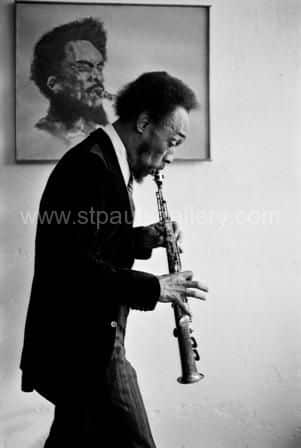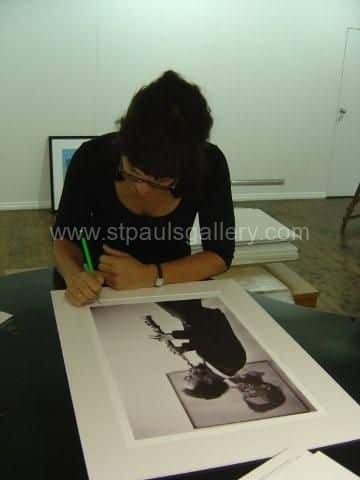Sam Rivers Deborah Feingold Signed Photograph 1979
£395.00
Jazz Man Sam Rivers Deborah Feingold Signed Photograph 1979
Date: Published Sept 2008
Signed By: Deborah Feingold in Pencil
Edition: 21 Prints Available World Wide
Atelier: Dekkel Fine Art Publishing
Condition: New – mint condition
Medium: Archival Giclee On 300gsm Fine Art Paper
Jazz Man Sam Rivers Deborah Feingold Signed Photograph 1979
Description
Jazz Man Sam Rivers Deborah Feingold Signed Photograph 1979
Samuel Carthorne Rivers (born September 25, 1923, in El Reno, Oklahoma)is an American jazz musician and composer. He performs on soprano and tenor saxophones, bass clarinet, flute, harmonica and piano.
Active in jazz since the early ’50s, Rivers earned wider attention during the mid-’60s spread of free jazz. With a thorough command of music theory, orchestration and composition, Rivers has been an influential and prominent artist in jazz music.
In 1959 Rivers began performing with 13-year-old drummer Tony Williams, who later went on to have an impressive career. Rivers did a brief stint with Miles Davis’s quintet in 1964, partly at Williams’s recommendation. This quintet was recorded on a single album, Miles in Tokyo. Unfortunately, Rivers’ playing style was too free to be compatible with Davis’s music at this point, and he was soon replaced by Wayne Shorter. Rivers was signed by Blue Note Records, for whom he recorded four albums as leader and made several sideman appearances. Among noted sidemen on his own Blue Note Records were Jaki Byard who appears on Fuchsia Swing Song, Herbie Hancock and Freddie Hubbard. He appeared on Blue Note recordings of Tony Williams, Andrew Hill and Larry Young.
Rivers’s music is rooted in bebop, but he is an adventurous player, adept at free jazz. The first of his Blue Note albums, Fuchsia Swing Song, is widely regarded as a masterpiece of an approach sometimes called “inside-outside”. The performer frequently obliterates the explicit harmonic framework (“going outside”) but retains a hidden link so as to be able to return to it in a seamless fashion. Rivers brought the conceptual tools of bebop harmony to a new level in this process, united at all times with the ability to “tell a story” which Lester Young had laid down as a benchmark for the jazz improviser.
His powers as a composer were also in evidence in this period: the ballad “Beatrice” from Fuchsia Swing Song has become an important standard, particularly for tenor saxophonists. It is analysed in detail in The Jazz Theory Book by Mark Levine who notes how each of its four four-bar elements has a distinct emotional identity.
Jazz Man Sam Rivers Deborah Feingold Signed Photograph 1979


Reviews
There are no reviews yet.